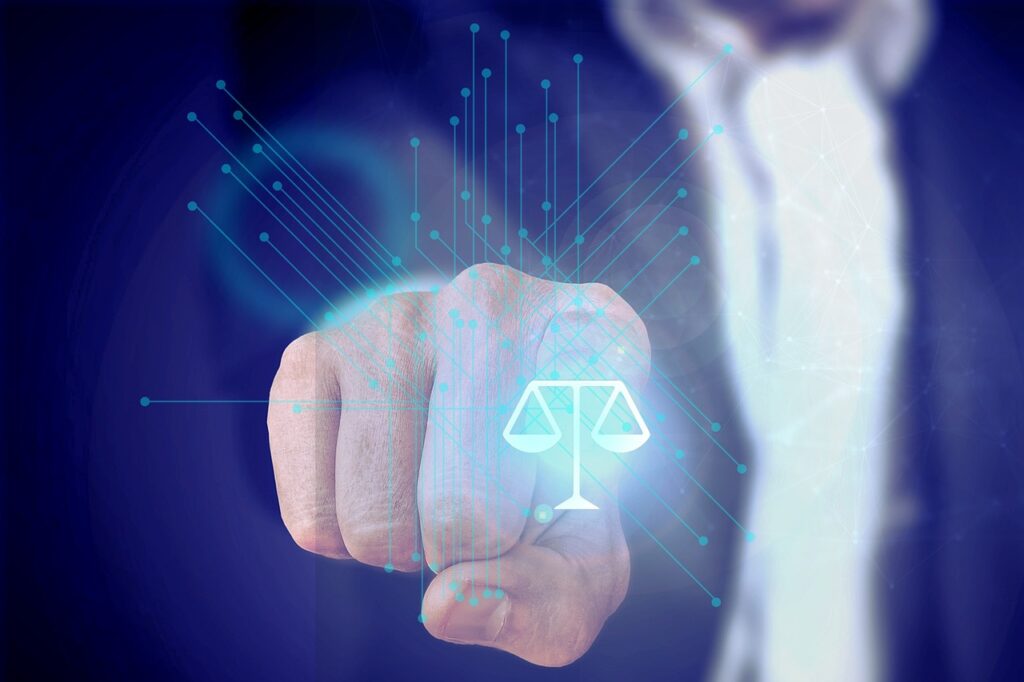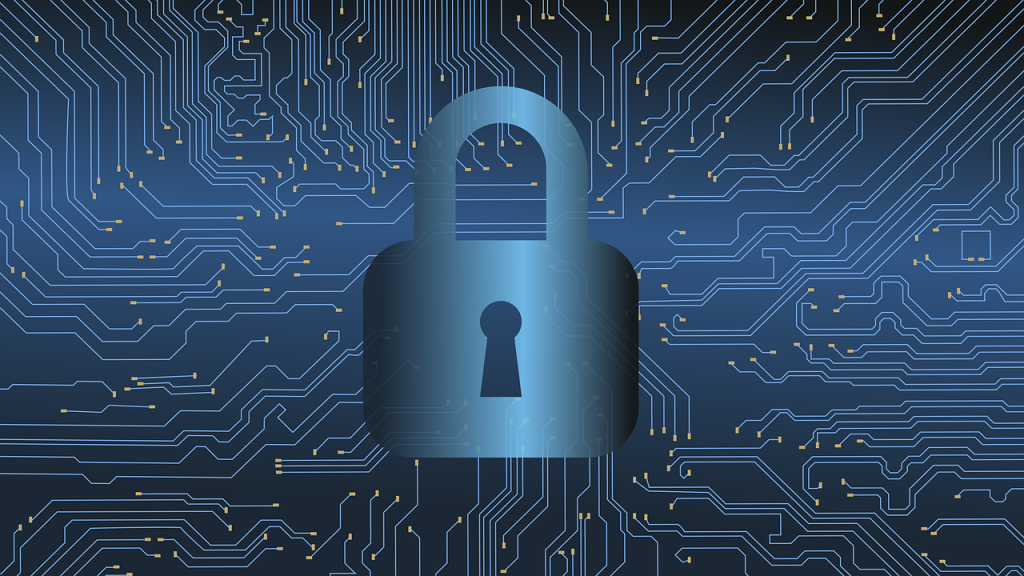Published on: 4th November 2025
Authored by: Duvvada Yathin Chowdary
Damodaram Sanjivayya National Law University
Abstract
Cybercrime has become one of the most formidable threats in the digital age, transcending geographical and jurisdictional boundaries. As India moves rapidly towards digitalisation, it has witnessed a parallel surge in cyber offences ranging from data breaches and phishing scams to ransomware attacks and cyberterrorism. The country’s legal response, primarily anchored in the Information Technology Act 2000, represents a significant legislative milestone in regulating activities in cyberspace and punishing offenders. However, despite the existence of a legal and institutional framework, enforcement remains fraught with challenges. Law enforcement agencies often lack the technical expertise, infrastructural capacity, and procedural clarity required to investigate and prosecute complex cyber offences effectively. Further complications arise from issues of cross-border jurisdiction, privacy concerns, and the rapid evolution of technology that continually outpaces the law. This article examines the existing legal framework governing cybercrime in India, analyses the principal obstacles in its enforcement, and proposes a multi-pronged approach involving legislative reform, institutional strengthening, and enhanced international cooperation to create a more resilient and adaptive cyber justice system.
Introduction
The digital age has blurred the boundaries between the physical and virtual worlds, bringing with it unprecedented convenience and equally unprecedented vulnerability. In India, where digital adoption has accelerated at an extraordinary pace, the cyberspace has become a double-edged sword an engine of economic growth and innovation, but also a fertile ground for new forms of criminality. Cybercrime, broadly understood as any unlawful act committed through or directed at computers and networks, includes activities such as hacking, identity theft, phishing, online defamation, cyberstalking, ransomware, and data theft. These offences, unlike traditional crimes, are characterised by anonymity, speed, and the ability to inflict harm on a massive scale without physical proximity.[1]
The statistics speak for themselves. According to the National Crime Records Bureau’s 2023 report, cybercrime incidents in India increased by over 25 per cent compared to the previous year, with financial frauds constituting the largest share. The report underscores a significant rise in crimes involving social media, online banking, and digital payment systems. Such numbers highlight that the expansion of digital infrastructure has not been matched by an equivalent expansion in digital safety or enforcement capacity.[2]
India’s legislative response to this growing menace is primarily embodied in the Information Technology Act 2000, which provides legal recognition to electronic transactions, defines cyber offences, and prescribes penalties. Supplementary provisions of the Indian Penal Code 1860, the Indian Evidence Act 1872, and the Information Technology (Intermediary Guidelines and Digital Media Ethics Code) Rules 2021 also contribute to the regulatory framework. Yet, in practice, the enforcement of these laws faces multiple obstacles. Many cases collapse due to insufficient digital forensics, lack of trained personnel, jurisdictional conflicts, and procedural inconsistencies in evidence handling.[3]
This article argues that India’s challenge is not merely legislative but structural. While the legal framework exists, the capacity to implement it effectively remains limited. The paper will, therefore, explore the evolution of India’s cyber law regime, analyse the systemic challenges in enforcement, and suggest reforms aimed at balancing innovation, privacy, and national security in an increasingly digital society.
Legal Framework for Cybercrime in India
- Statutory and Institutional Framework
India’s legal response to cybercrime has evolved over the last two decades, primarily through the enactment of legislation that recognises digital offences and empowers authorities to investigate and prosecute them. While laws provide the skeleton, their enforcement depends critically on institutional mechanisms. The National Cyber Crime Reporting Portal, launched in 2019, has emerged as a key platform enabling citizens to report online fraud, financial scams, and cases of sexual exploitation. According to government data, over 1.2 million complaints have been registered through this portal by 2023, reflecting both the scale of cybercrime and the importance of a centralised reporting mechanism.[4]
In addition, specialised Cyber Crime Cells in state police departments, often working in coordination with the National Cyber Crime Coordination Centre (I4C) under the Ministry of Home Affairs, conduct investigations of technologically sophisticated crimes. CERT-In, the Indian Computer Emergency Response Team, functions as the nodal technical agency, issuing advisories, monitoring threats, and supporting incident response. Together, these institutions create a framework intended to bridge legislative intent and on-the-ground enforcement.[5]
However, despite these mechanisms, challenges persist. Reports indicate that many state-level cybercrime units lack adequate staffing and technical expertise to handle complex investigations, resulting in delays and low conviction rates.[6] The judiciary has repeatedly highlighted the necessity for specialised training and infrastructure, as reflected in various judgements stressing the need for modern investigative techniques and proper admissibility standards for digital evidence.
- Judicial Interpretation and Policy Evolution
Indian courts have played a critical role in shaping the enforcement of cyber laws, interpreting provisions to balance individual rights with state interests. In Shreya Singhal v Union of India, the Supreme Court struck down Section 66A of the IT Act, emphasising that restrictions on online speech must meet the tests of proportionality and necessity, thus setting a precedent for protecting digital rights while regulating cyber behaviour.[7] Similarly, in Avnish Bajaj v State (NCT of Delhi), the court addressed the liability of intermediaries for content hosted on e-commerce and social media platforms, highlighting the interplay between law, technology, and accountability.[8]
Policy documents also underscore the dynamic nature of cybercrime enforcement. The National Cyber Security Policy 2013 and subsequent updates by the Ministry of Electronics and Information Technology stress capacity building, inter-agency coordination, and public-private partnerships as essential for effective cybercrime mitigation. Reports by NCRB reveal that while legislation exists, its effectiveness is often contingent upon the ability of institutions to adapt to emerging threats, such as ransomware, phishing scams, and data breaches affecting critical infrastructure.[9]
Judicial pronouncements and policy directives together suggest a framework that is robust in principle but uneven in execution. They demonstrate that India’s legal apparatus for cybercrime is not static; it evolves through a combination of court interpretation, government policy, and practical experience from enforcement agencies. Nonetheless, gaps remain, particularly in terms of specialised training, technological resources, and cross-border enforcement mechanisms, setting the stage for the challenges explored in subsequent sections.
The Nature and Scale of Cybercrime in India
India’s digital transformation has been remarkable: over 900 million internet users, a booming e-commerce sector, and extensive adoption of online banking and digital payments. Yet, alongside this growth, the country has witnessed a significant surge in cyber offences, reflecting the evolving methods and sophistication of criminals in the digital space. Unlike traditional crimes, cybercrimes are often borderless, anonymous, and executed with technologies that make detection and prosecution exceptionally challenging.[10]
According to the National Crime Records Bureau (NCRB) 2023 report, India recorded over 65,000 cybercrime incidents in a single year, marking a 25% increase from 2022. Financial frauds, including phishing, online banking scams, and digital wallet fraud, constituted the majority of these offences, followed by crimes related to sexual exploitation, cyberstalking, and online defamation.1 Reports from CERT-In indicate a parallel rise in ransomware attacks targeting government agencies, healthcare institutions, and critical infrastructure, revealing a trend of increasingly organised and high-stakes cyber threats.[11]
The scale of cybercrime is not limited to volume; it also encompasses diverse modalities. Phishing attacks exploit unsuspecting users to extract sensitive information, while identity theft and account hijacking enable financial and reputational damage. Ransomware attacks encrypt critical data and demand payment, sometimes crippling essential services for days or weeks. Social engineering and deepfake technologies have created new challenges for law enforcement, blurring the line between digital manipulation and criminal intent.[12]
Several factors contribute to this surge. First, the rapid adoption of digital services has outpaced public awareness and cybersecurity literacy. Second, the low risk of detection and prosecution, combined with technological anonymity, incentivises criminal activity. Third, cross-border complexities hinder investigation: perpetrators often operate from countries beyond Indian jurisdiction, making extradition and evidence-gathering cumbersome. The UNODC notes that the global nature of cybercrime requires international cooperation, yet gaps in legal harmonisation and operational coordination persist.[13]
Judicial observations further highlight the nature of cybercrime. In Avnish Bajaj v State (NCT of Delhi),[14] the court recognised the challenges posed by intermediary liability and cross-platform content, reflecting the need for nuanced understanding of technology in law enforcement.Similarly, in Shreya Singhal v Union of India, the Supreme Court emphasised that legal provisions must be interpreted to prevent misuse while effectively addressing digital threats.[15]
The combined picture from statistical reports, judicial pronouncements, and technical advisories suggests that cybercrime in India is both widespread and sophisticated. It is shaped by technological innovation, economic opportunity, and legal ambiguity, making enforcement a complex undertaking. Understanding the nature and scale of cybercrime is crucial to appreciating the challenges that the legal system faces in responding effectively the focus of the next section.
Challenges in Enforcement
The enforcement of cybercrime laws in India faces a complex array of challenges, spanning legal ambiguities, technical constraints, institutional limitations, and international obstacles. While legislation provides a framework for addressing digital offences, practical enforcement often falls short due to the rapidly evolving nature of cybercrime and the unique characteristics of cyberspace.
- Legal Gaps and Ambiguities
One of the foremost challenges in enforcement is the presence of legal ambiguities. Many offences in the cyber domain are not clearly defined, leading to uncertainty in prosecution. For example, while laws address hacking and data theft, emerging threats such as ransomware, cryptocurrency fraud, and AI-driven cyber manipulation are not explicitly codified. This legislative lag creates loopholes that perpetrators exploit.[16]
Jurisdictional issues further complicate enforcement. Cybercrimes often originate outside India’s borders, making the application of domestic law challenging. Mutual Legal Assistance Treaties (MLATs) are necessary but often slow, and many countries have varying definitions of cyber offences. Courts have recognised these limitations; in Avnish Bajaj v State (NCT of Delhi), the Delhi High Court noted the difficulties in establishing intermediary liability and cross-border accountability.[17]
- Technical and Investigative Challenges
Law enforcement agencies frequently face significant technical constraints. Investigations require advanced digital forensic tools and skilled personnel capable of tracing IP addresses, decrypting data, and preserving electronic evidence without tampering. However, reports indicate that many state cybercrime cells lack these capabilities, resulting in incomplete investigations and low conviction rates.[18]
The rapid evolution of technology also poses challenges. Encryption, anonymisation tools, and blockchain-based systems can shield perpetrators from detection. Ransomware attacks, for instance, often leverage cryptocurrency payments, complicating tracking and prosecution. Without continual training and investment in technical infrastructure, enforcement agencies struggle to keep pace with cybercriminal innovation.[19]
- Institutional and Procedural Limitations
Coordination among various agencies remains a persistent problem. Cybercrime investigations involve multiple actors state police, CERT-In, I4C, and central investigative agencies yet there is often duplication, jurisdictional conflict, or delay. Standard operating procedures are still evolving, and evidence collection protocols vary across states.[20]
Additionally, the judicial process is not fully adapted to the demands of cybercrime prosecution. Courts require extensive expert testimony to evaluate digital evidence, but access to qualified technical experts is limited. This has sometimes resulted in cases being dismissed or reduced due to procedural deficiencies, undermining public confidence in the legal system.[21]
- International and Cross-Border Challenges
Cybercrime is inherently global. A hacker operating from one country can victimize victims in multiple jurisdictions. Extradition treaties, cross-border evidence collection, and international cooperation are critical but often insufficient. UNODC and INTERPOL reports highlight that many countries, including India, face delays in mutual assistance requests, resulting in perpetrators evading justice.[22]
Courts and policymakers have acknowledged these international constraints. In Shreya Singhal v Union of India, the Supreme Court underscored the need for internationally harmonised standards while balancing rights and enforcement a tension that persists across all cybercrime adjudications.[23]
- Privacy, Rights, and Ethical Concerns
Finally, enforcement must navigate a delicate balance between security and civil liberties. Aggressive surveillance or evidence-gathering can infringe on individual privacy, creating ethical dilemmas. For instance, overreach in monitoring social media platforms or intercepting communications may conflict with the right to privacy upheld in K.S. Puttaswamy v Union of India.[24]
Such concerns have sometimes slowed enforcement, as agencies are constrained by privacy protections and due process requirements. Effective enforcement must therefore integrate strong legal safeguards while ensuring that cybercriminals are held accountable.
Case Studies / Precedents
Examining specific cases illustrates the practical challenges of enforcing cybercrime laws in India and provides insight into judicial reasoning and institutional limitations. While legislation and policy create a framework, case law highlights gaps in implementation and the evolving nature of digital offences.
- Shreya Singhal v Union of India
In Shreya Singhal v Union of India, the Supreme Court struck down Section 66A of the IT Act, which criminalised offensive online speech, as unconstitutional for violating freedom of speech and expression under Article 19(1)(a). The case underscored the tension between regulating online content to prevent harm and protecting individual rights. Importantly, it highlighted the challenges of defining offences in cyberspace: vague wording led to widespread misuse and arbitrary arrests, illustrating the need for precise legislative drafting to ensure enforceability without overreach.[25]
- Avnish Bajaj v State (NCT of Delhi)
The Delhi High Court in Avnish Bajaj v State (NCT of Delhi) addressed the liability of intermediaries, particularly e-commerce platforms, for content hosted by third parties. This case revealed the difficulty in holding platforms accountable while recognising their limited capacity to monitor all user-generated content. The judgement influenced later regulatory frameworks on intermediary liability, emphasising due diligence and safe harbour provisions, but enforcement remains uneven across states.[26]
- Comparative Example – United States: Target Data Breach (2013)
International examples provide context for India’s enforcement challenges. The 2013 Target Corporation data breach in the United States exposed 40 million customer credit and debit card accounts, followed by a prolonged investigation and multi-million-dollar settlements. The case demonstrated the importance of rapid incident response, advanced forensic investigation, and coordination between private and public agencies. Lessons for India include the need for technical capacity, public-private collaboration, and proactive monitoring.[27]
- Comparative Example – United Kingdom: TalkTalk Cyber Attack (2015)
The UK’s TalkTalk cyber attack in 2015 highlighted vulnerabilities in corporate cybersecurity and gaps in consumer data protection. Enforcement involved both the National Crime Agency and Information Commissioner’s Office, resulting in fines and policy reforms. For India, this underscores the importance of regulatory oversight, mandatory reporting of breaches, and technical preparedness for both public and private sector entities.[28]
Analysis
These cases collectively reveal recurring themes: the importance of precise legal definitions, the role of intermediary accountability, the need for technical expertise in investigation, and the value of coordination between public and private actors. Indian cases demonstrate judicial sensitivity to rights and due process, while international examples highlight the operational mechanisms required to contain sophisticated cyber attacks. Together, they illustrate the multi-dimensional nature of enforcement challenges and the lessons that can be adapted to the Indian context.
Possible Reforms and Solutions
Addressing the enforcement challenges in India’s cybercrime landscape requires a multi-pronged strategy encompassing legislative reform, technical capacity building, institutional strengthening, and international cooperation. While the legal framework provides a foundation, its effectiveness depends on adaptive measures that reflect the dynamic nature of cyberspace.
- Legislative and Policy Reforms
First, legislative clarity is paramount. Existing laws need updating to explicitly address emerging threats such as ransomware, cryptocurrency fraud, AI-driven manipulation, and deepfake content. Clear definitions reduce ambiguity, limit misuse, and facilitate prosecution. Judicial guidance from Shreya Singhal v Union of India underscores the importance of balancing enforcement with constitutional rights, suggesting that new legislation should integrate proportionality and safeguards for privacy and free expression.[29]
Policy initiatives should also focus on mandatory breach reporting by companies and intermediaries, coupled with well-defined penalties. Learning from international best practices, such as the EU’s General Data Protection Regulation (GDPR), can provide India with a framework to protect user data while enhancing enforcement capabilities.[30]
- Technical Capacity Building
Technical expertise is critical for effective cybercrime enforcement. Law enforcement agencies require advanced digital forensic laboratories, updated investigative tools, and continuous training for personnel. Programs in collaboration with academia and the private sector can enhance skills in tracking cyber threats, analysing encrypted communications, and recovering compromised data. CERT-In’s advisories and reports highlight the growing sophistication of cyberattacks, making ongoing skill development indispensable.[31]
- Institutional Strengthening and Coordination
Institutional reforms should focus on strengthening inter-agency coordination. Cybercrime investigations often involve multiple entities state police, central agencies, CERT-In, and I4C whose roles must be clearly defined to avoid duplication and delays. Establishing specialised cybercrime courts or dedicated judicial benches can expedite trials and ensure expert handling of technical evidence. Furthermore, public-private partnerships can support proactive threat detection and awareness campaigns.[32]
- International Cooperation
Given the transnational nature of cybercrime, India must enhance international collaboration. Strengthening MLATs, participating in INTERPOL and UNODC cybercrime initiatives, and harmonising definitions of offences across borders can facilitate extradition and evidence sharing. Comparative examples, such as the Target and TalkTalk incidents, demonstrate the importance of cross-border coordination in preventing and mitigating cybercrime.[33]
- Balancing Privacy and Rights
Finally, reforms must integrate mechanisms that safeguard individual rights. Any surveillance or monitoring must be proportionate, transparent, and subject to judicial oversight, consistent with the principles established in K.S. Puttaswamy v Union of India. Ethical enforcement ensures public trust and strengthens compliance, making enforcement both effective and socially legitimate.[34]
By adopting these reforms, India can create a resilient, adaptive, and rights-respecting framework for cybercrime enforcement, capable of responding to evolving threats while protecting citizens’ constitutional freedoms.
Conclusion
India’s digital revolution has transformed the economy, communication, and governance, but it has also created fertile ground for cybercrime. The country has established a legal and institutional framework, including specialised cybercrime cells, CERT-In, and national reporting portals, supported by judicial guidance that balances enforcement with individual rights. However, as the preceding analysis shows, enforcement remains a significant challenge due to legal ambiguities, technical limitations, procedural inefficiencies, and the transnational nature of cyber offences.
Case studies such as Shreya Singhal v Union of India and Avnish Bajaj v State (NCT of Delhi) illustrate the judiciary’s role in interpreting cyber law while highlighting gaps in legislative precision and enforcement capacity. Comparative international examples, including the Target and TalkTalk data breaches, underscore the necessity of technical preparedness, inter-agency coordination, and cross-border cooperation.
To address these challenges, India must adopt a multi-faceted approach: updating legislation to address emerging threats, enhancing technical and investigative capabilities, strengthening institutional coordination, and participating actively in international cybercrime frameworks. Equally important is the integration of privacy and ethical safeguards, ensuring that enforcement is both effective and socially legitimate.
Ultimately, the fight against cybercrime in India is not solely a legal or technical issue; it is a systemic endeavour requiring continuous adaptation, resource investment, and collaboration among government, judiciary, private sector, and civil society. With these measures, India can aspire to a cyber justice ecosystem that protects citizens, upholds constitutional freedoms, and responds effectively to the evolving challenges of the digital age.
References:
[1] Ministry of Home Affairs, National Cyber Crime Reporting Portal Statistics 2023 (Government of India 2024).
[2] National Crime Records Bureau, Crime in India Report 2023 (Government of India 2024).
[3] Shreya Singhal v Union of India (2015) 5 SCC 1.
[4] Ministry of Home Affairs, National Cyber Crime Reporting Portal Statistics 2023 (Government of India 2024).
[5] CERT-In, Annual Report 2023 (Ministry of Electronics and Information Technology, 2024).
[6] R. Saha and A. Dutta, ‘State Cybercrime Cells in India: Capacity and Challenges’ (2022) 14 Journal of Cyber Policy 56.
[7] Shreya Singhal v Union of India (2015) 5 SCC 1.
[8] Avnish Bajaj v State (NCT of Delhi) (2008) 172 DLT 1.
[9] National Crime Records Bureau, Crime in India Report 2023 (Government of India 2024); Ministry of Electronics and Information Technology, National Cyber Security Policy 2013 (MeitY 2013).
[10] National Crime Records Bureau, Crime in India Report 2023 (Government of India 2024).
[11] CERT-In, Annual Report 2023 (Ministry of Electronics and Information Technology 2024).
[12] R. Saha and A. Dutta, ‘State Cybercrime Cells in India: Capacity and Challenges’ (2022) 14 Journal of Cyber Policy 56.
[13] United Nations Office on Drugs and Crime (UNODC), Comprehensive Study on Cybercrime Trends (UNODC 2022).
[14] Avnish Bajaj v State (NCT of Delhi) (2008) 172 DLT 1
[15] Shreya Singhal v Union of India (2015) 5 SCC 1.
[16] R. Saha and A. Dutta, ‘State Cybercrime Cells in India: Capacity and Challenges’ (2022) 14 Journal of Cyber Policy 56.
[17] Avnish Bajaj v State (NCT of Delhi) (2008) 172 DLT 1.
[18] CERT-In, Annual Report 2023 (Ministry of Electronics and Information Technology 2024).
[19] United Nations Office on Drugs and Crime (UNODC), Comprehensive Study on Cybercrime Trends (UNODC 2022).
[20] Ministry of Home Affairs, National Cyber Crime Reporting Portal Statistics 2023 (Government of India 2024).
[21] National Crime Records Bureau, Crime in India Report 2023 (Government of India 2024).
[22] INTERPOL, Cybercrime Annual Report 2022 (INTERPOL 2022).
[23] Shreya Singhal v Union of India (2015) 5 SCC 1.
[24] K.S. Puttaswamy v Union of India (2017) 10 SCC 1.
[25] Shreya Singhal v Union of India (2015) 5 SCC 1.
[26] Avnish Bajaj v State (NCT of Delhi) (2008) 172 DLT 1.
[27] United States Government Accountability Office, Target Data Breach Report 2014 (US GAO 2014).
[28] Information Commissioner’s Office (UK), TalkTalk Cyber Attack Investigation Report 2015 (UK ICO 2015).
[29] Shreya Singhal v Union of India (2015) 5 SCC 1.
[30] European Union, General Data Protection Regulation (GDPR) 2018 (EU 2018).
[31] CERT-In, Annual Report 2023 (Ministry of Electronics and Information Technology 2024).
[32] Ministry of Home Affairs, National Cyber Crime Reporting Portal Statistics 2023 (Government of India 2024).
[33] United States Government Accountability Office, Target Data Breach Report 2014 (US GAO 2014); Information Commissioner’s Office (UK), TalkTalk Cyber Attack Investigation Report 2015 (UK ICO 2015).
[34] K.S. Puttaswamy v Union of India (2017) 10 SCC 1.




